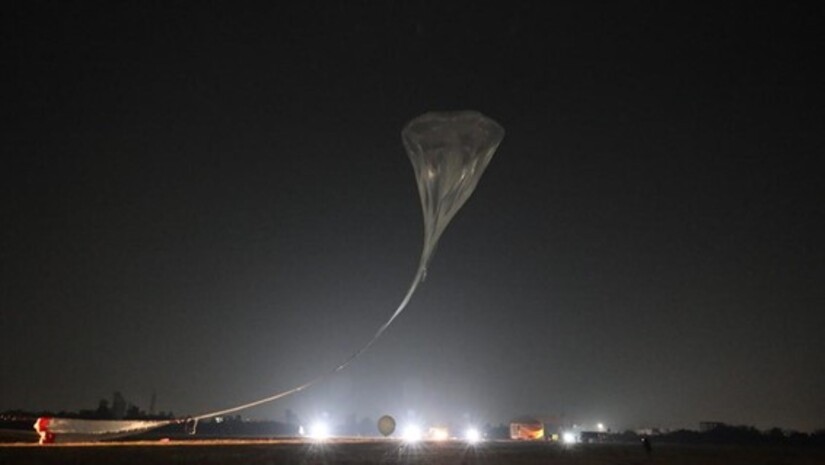GMV is collaborating with HALO Space to make space tourism a reality

The concept of space tourism is continuing to advance thanks to a project led by the Spanish company HALO Space, with GMV playing a key role. The aim of this project is to offer a 6‑hour stratospheric flight experience that will reach an altitude of 30 to 40 km above sea level. The company is planning to offer about 400 commercial trips each year by 2029, carrying a total of 3,000 passengers, all with zero emissions. The price the space tourists will be paying for their experience is expected to be between €100,000 and €200,000.
As a first-level partner in the HALO Space industrial consortium, GMV is currently responsible for the ground control centers that will house the flight planning systems and the systems for monitoring the onboard elements (capsule, balloon, parachute, and parafoil). It will also offer navigation support for the pilots. In addition, GMV’s collaboration involves definition of the flight profiles and other operational aspects, so that these can be certified during later phases of the project.
GMV began working closely with the HALO Space project soon after it was initiated in 2021, with the other principal members of the consortium being CT Ingenieros and Aciturri Aeronáutica. During the first phase, efforts were focused on defining the business concept and mission. To summarize, the mission consists of offering flights inside a pressurized capsule with eight passengers and a pilot. The capsule will be lifted upward by a balloon filled with helium (or hydrogen in the future), to an altitude high enough to allow the space tourists to enjoy views of the atmospheric blue halo and the curvature of the earth, all against the black background of space.
To complete the flight, the balloon and capsule will slowly descend to an altitude of 8 km, where the balloon will separate from the capsule. A parafoil is then launched by the capsule, which allows it to glide back to earth and land at one of the predefined locations. During the initial studies and concept discussions, GMV was able to contribute its experience in flight dynamics analysis, radiofrequency communications, and development of control centers.
The second phase includes execution of a series of flights in proof of concept mode. This is being done by using prototypes of the flight segment elements as well as the elements GMV has developed on the ground. These include an algorithm used to predict flight trajectories based on a physical model of the atmosphere and its effects on the balloon (known as the Balloon Flight Path Simulator or BFPS, developed by GMV in Spain), which is fed by data from a telemetric reception, processing, and storage system (the Mission Control System or MCS, developed by GMV in Romania).
The BFPS allows a flight’s viability to be simulated and confirmed, and it is also used to calculate the gas volumes and ballast needed, and the events navigation will allow (e.g., duration of the flight’s cruising phase). This simulator can also be used to determine the safest places for landing the capsule. These are all part of the flight plan information that must be communicated to the civil aviation authorities prior to takeoff. The MCS, on the other hand, allows the parameters measured in the capsule to be monitored and controlled, both from the ground and in the capsule itself (e.g., pressures, temperatures, tensions, orientations, etc.). The balloon’s position and altitude are tracked at all times with GPS, which allows the algorithm’s predictions to be updated in real time during the flight. The MCS is a spin-off of an ESA contract regarding a product developed by GMV in Romania related to HAPS integration in satellite control centers, that was configured to comply with the HALO mission requirements.
In the future, mission planning systems will be added to these initial systems, and they will cover all operational activities such as those for managing passengers and ground crews, post-flight analysis, flight simulators for training pilots, etc. GMV is proposing a cloud-based approach for these systems, which will allow HALO Space to access and monitor any capsules in flight, as well as the activities taking place in parallel on the ground at its various “stratoports” around the world.
On December 7th, HALO Space and the Tata Institute of Fundamental Research (TIFR), with operational on-site support from GMV during the flight and remote support from Spain and Romania, successfully completed the first test flight. The first prototype capsule was elevated to an altitude of 37 km, during a flight that lasted approximately 4 hours. The balloon took off in Hyderabad, India, and just as calculated by GMV’s algorithms, it landed 32 km away to the northwest, in an open field near the town of Mogiligundla. During the flight, GMV was receiving and processing telemetric data from the onboard instruments and displaying this information for the team members, while also validating its flight trajectory predictions.
As the next flights are being prepared, GMV is already working in parallel to define the project’s next phases. This will include compiling and preparing all of the information needed to begin the certification processes for the complete system, which is a fundamental requirement before the first passengers will be allowed to fly.